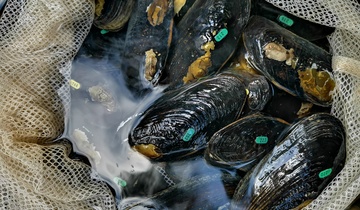Monitoring periphyton – good news or bad?
NIWA has recently summarised trends in the levels of periphyton in streams and rivers across New Zealand. The news is not all bad, as overall more rivers had decreasing levels of the slimy green algae than had increasing levels.
Periphyton is one of the variables monitored in the National River Water Quality Network (NRWQN). This network, managed by NIWA, has been monitoring river water quality nationwide on a monthly basis for over 20 years, and periphyton is monitored at 73 of the total of 77 sites in the NRWQN.
The report provided answers to three main questions.
Q. How much of a nuisance is periphyton?
Around 30 percent of rivers had maximum annual algae cover above MfE’s recommended ‘nuisance’ guidelines – these are levels sufficiently high to impact on river recreation and aesthetic values – at some time during an average year between 1990–2006. This suggests that nuisance periphyton is a fairly widespread problem in New Zealand rivers.
Q. Do human activities influence the periphyton levels in NRWQN rivers?
Human activities in catchments do increase the levels of nuisance periphyton in NRWQN rivers. Forty-five percent of sites affected by human activity (such as farming in the catchment) had average annual maximum periphyton cover above the recommended guideline compared with 13 percent of sites without human impacts.
Q. Is the situation getting better or worse?
Overall, between 1990 and 2006 more rivers had decreasing (i.e., improving) periphyton cover than increasing cover. This highlights that periphyton cover is influenced by many factors – for example, changes in flow disturbance associated with El Niño/La Niña patterns, as well as nutrient levels, water temperature, shading, and high flow events.
Read the full report on the MfE website.
Contact: Dr John Quinn, NIWA







